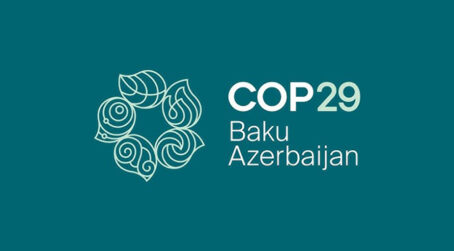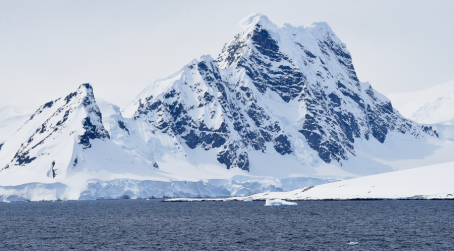Drews, R., Brown, J., Matsuoka, K., Witrant, E., Philippe, M., Hubbard, B., and Pattyn, F (2015) Anomalously-dense firn in an ice-shelf channel revealed by wide-angle radar, The Cryosphere Discuss., 9, 5647-5680, doi:10.5194/tcd-9-5647-2015.
Schwegmann, S., Rinne, E., Ricker, R., Hendricks, S., and Helm, V. (2015) About the consistency between Envisat and CryoSat-2 radar freeboard retrieval over Antarctic sea ice, The Cryosphere Discuss. 9, 4893-4923, doi:10.5194/tcd-9-4893-2015.
Publications archive:
The following list is a summary of literature on Antarctic sea ice that has presents results from ship-based sea ice observations. This includes papers and reports based on individual cruises, as well has those that have made use of the full ASPeCt data archive.
Ackley, S. F (1979), Mass-balance aspects of Weddell Sea pack ice, Journal of Glaciology, 24(90), 391-405.
Ackley, S. F., P. Wadhams, J. C. Comiso and A. P. Worby (2003), Decadal decrease of Antarctic sea ice extent inferred from whaling records revisited on the basis of historical and modern sea ice records, Polar Research, 22(1), 19-25.
Allison, I. (1989), The East Antarctic sea ice zone: ice characteristics and drift, GeoJournal, 18.1, 103-115.
Allison, I., R. E. Brandt, and S. G. Warren (1993), East Antarctic sea ice: albedo, thickness distribution and snow cover, Journal of Geophysical Research, 98, 12,417-12,429.
Allison, I. and A. P. Worby (1994), Seasonal changes of sea ice characteristics off East Antarctica, Annals of Glaciology, 20, 195-201.
Brandt, R. E., S. G. Warren, A. P. Worby, and T. C. Grenfell (2005), Surface albedo of the Antarctic sea ice zone, Journal of Climate, 18(17), 3606-3622.
Casarini, M. P., and R. Massom (1987), Winter Weddell Sea Project, Sea ice observations, leg 2: June-September 1986, University of Cambridge, Scott Polar Research Institute, Cambridge, UK, 161 pp.
DeLiberty, T.D., C.A. Geiger, S.F. Ackley, A.P. Worby, and M. VanWoert (2011), Estimating the annual cycle of sea ice thickness and volume in the Ross Sea, Deep Sea Research, 58 (9 — 10), 1250 — 1260, doi:10.1016/j.dsr2.2010.12.005.
Eicken, H., T. C. Grenfell, and B. Stonehouse (1988), Sea ice conditions during an early spring voyage in the eastern Weddell Sea, Antarctica, Polar Record, 24(149), 49-54.
Eicken, H., and M. A. Lange (1989), Development and properties of sea ice in the coastal regime of the Southeastern Weddell Sea, Journal of Geophysical Research, 94(C6), 8193-8206.
Haas, C., T. Viehoff, and H. Eicken (1992), Sea-ice conditions during the Winter Weddell Gyre Study (WWGS) 1992 ANTX/4 with RV “Polarstern”: Shipboard observations and AVHRR satellite imagery, Berichte aus dem Fachbereich Physik, 34, Alfred Wegener Institute für Polar und Meeresforschung.
Heil, P., R.A. Massom, I. Allison, A.P. Worby, and V.I. Lytle (2009), The role of off-shelf to on-shelf transitions of East Antarctic dynamics during spring 2003, Journal of Geophysical Research, 114, doi:10.1029/2008JC004873.
Heil, P., R.A. Massom, I. Allison, and A.P. Worby (2011), Physical attributes of sea-ice kinematics during spring 2007 off East Antarctica, Deep-Sea Research II, 58 (9 — 10), 1158 — 1171, doi:10.1016/j.dsr2.2010.12.004.
Hutchings, J.K., P. Heil, A. Steer, and W.D. Hibler III (2012), Small-scale spatial variability of sea ice deformation in the western Weddell Sea during early summer, Journal of Geophysical Research, 117, C01002, doi:10.1029/2011JC006961.
Jacka, T. H., I. Allison, and J. C. Wilson (1987), Characteristics of the seasonal sea ice of East Antarctica and comparisons with satellite observations, Annals of Glaciology, 9, 85-91.
Jeffries, M. O., K. Morris, T. Maksym, N. Kozlenko, and T. Tin, Autumn sea ice thickness, ridging and heat flux variability in and adjacent to Terra Nova Bay, Ross Sea, Antarctica, Journal of Geophysical Research, 106(C3), 4437-4448.
Jeffries, M. O., and W. F. Weeks (1992), Structural characteristics and development of sea ice in the western Ross Sea, Antarctic Science, 5(1), 63-75.
Jeffries, M. O., A. P. Worby, K. Morris, and W. F. Weeks (1997), Seasonal variations in the properties and structural composition of sea ice and snow cover in the Bellingshausen and Amundsen Seas, Antarctica, Journal of Glaciology, 43(143), 138-151.
Lytle, V. I., A. P. Worby, and R. Massom (1998), Sea ice pressure ridges in East Antarctica. Annals of Glaciology, 27, 449-454.
Nihashi, S., K. I. Ohshima, M. O. Jeffries, and T. Kawamura (2005), Sea-ice melting processes inferred from ice-upper ocean relationships in the Ross Sea, Antarctica, Journal of Geophysical Research, 110, C02002, doi:10.10
Ozsoy-Cicek, B., S.F. Ackley, A. Worby, H. Xie, and J. Lieser (2011), Antarctic sea-ice extents and concentrations: comparison of satellite and ship measurements from International Polar Year cruises, Annals of Glaciology, 52 (57), 318 — 326.
Ozsoy-Cicek, B., S. Kern, S.F. Ackley, H. Xie, and A.E. Tekeli (2011), Intercomparisons of Antarctic sea ice types from visual ship, RADARSAT-1 SAR, Envisat ASAR, QuikSCAT, and AMSR-E satellite observations in the Bellingshausen Sea, Deep-Sea Research II, 58 (9 — 10), 1092 — 1111, doi:10.1016/j.dsr2.2010.10.031.
Steer, A., A.P. Worby, and P. Heil (2008), Observed changes in sea ice floe size distribution during early summer in the western Weddell Sea, Deep-Sea Research II, 55 (8–9), 933–942.
Timmermann, R., A. P. Worby, H. Goosse, and T. Fichefet (2004), Utilizing the ASPeCt sea ice thickness data set to evaluate a global coupled sea ice ocean model, Journal of Geophysical Research, 109, C07017, doi:10.1029/2003JC002242.
Tin, T. and M. O. Jeffries, M. Lensu, and J. Tuhkuri (2003), Estimating the thickness of ridged sea ice from ship observations in the Ross Sea, Antarctica, Antarctic Science, 15(1), 47-54.
Tin, T., R. Timmermann, and M. O. Jeffries (2004), A field and numerical study of the evolution of sea ice thickness in the Ross Sea, Antarctica, 1998-99, Journal of Glaciology, 50(170), 436-446.
Vancoppenolle, M., R. Timmermann, S.F. Ackley, T. Fichefet, H. Goosse, P. Heil, J. Lieser, K.C. Leonard, M. Nicolaus, T. Papakyriakou, J.-L. Tison (2011), Assessment of radiation forcing data sets for large-scale sea ice models in the Southern Ocean, 23pp., Deep-Sea Research II, doi:10.1016/j.dsr2.2010.10.039.
Wadhams, P., M. A. Lange, and S. F. Ackley (1987), The ice thickness distribution across the Atlantic sector of the Antarctic Ocean in midwinter, Journal of Geophysical Research, 92(C13), 14,535-14,552.
Worby, A. P., M. O. Jeffries, W. F. Weeks, K. Morris, and R. Jaña (1996), The thickness distribution of sea ice and snow cover during late winter in the Bellingshausen and Amundsen Seas, Antarctica. Journal of Geophysical Research, 101(C12), 28,441-28,455.
Worby, A. P., R. A. Massom, I. Allison, V. I. Lytle, and P. Heil (1998), East Antarctic sea ice: a review of its structure, properties and drift. In: Antarctic Sea Ice Properties, Processes and Variability, edited by M. O. Jeffries, AGU Antarctic Research Series, 41-67.
Worby, A.P., A. Steer, J. Lieser, P. Heil, D. Yi, T. Markus, I. Allison, R.A. Massom, N. Galin, and J. Zwally (2011), Regional-scale sea ice and snow thickness distributions from in situ and satellite measurements over East Antarctica during SIPEX, Deep-Sea Research II, 58, 1125 — 1136, doi:10.1016/j.dsr2.2010.12.001.
Worby, A. P., and X. Wu (1998), East Antarctic sea ice: observations and modelling. Annals of Glaciology, 27, 427-432.
Worby, A. P. (1999), Observing Antarctic Sea Ice: A practical guide for conducting sea ice observations from vessels operating in the Antarctic pack ice. A CD-ROM produced for the Antarctic Sea Ice Processes and Climate (ASPeCt) program of the Scientific Committee for Antarctic Research (SCAR) Global Change (GLOCHANT) program, Hobart, Tasmania, Australia.
Worby, A. P. and I. Allison (1999), A technique for making ship-based observations of Antarctic sea ice thickness and characteristics, Part I: Observational technique and results, Antarctic CRC Research Report, 14, pp 1-23.
Worby, A. P. and V. Dirita (1999), A technique for making ship-based observations of Antarctic sea ice thickness and characteristics, Part II: User operating manual, Antarctic CRC Research Report, 14, pp 24-63.
Worby, A. P. and S. F. Ackley (2000), Antarctic research yields circumpolar sea ice thickness data. Eos, Transactions of American Geophysical Union, 81(17), 181, 184-185.
Worby, A. P. and J. C. Comiso (2004), Studies of the Antarctic sea ice edge and ice extent from satellite and ship observations, Remote Sensing of Environment, 92, 98-111.



